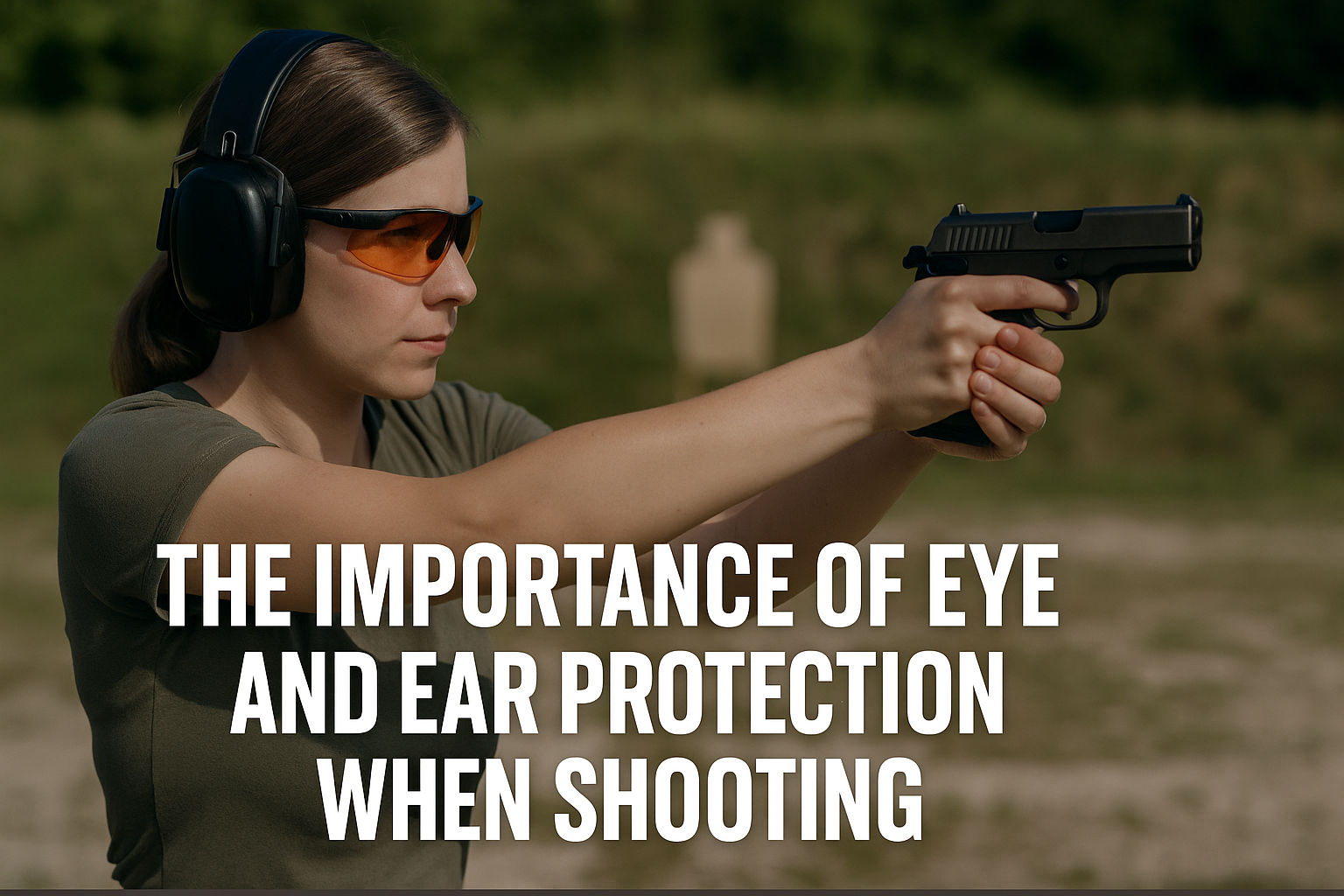
Whether you are a seasoned hunter, a recreational shooter, or a first-time visitor at the range, one thing should always remain a top priority: safety. Firearms are powerful tools, and while they offer sport, protection, and recreation, they also produce significant risks especially to the eyes and ears. Eye and ear protection is not optional; it is essential.
In fact, according to the National Institute for Occupational Safety and Health (NIOSH), thousands of shooting-related injuries occur every year due to lack of proper safety gear. Many of these incidents could have been prevented with high-quality protective equipment. This article explores the importance of eye and ear protection when shooting, the potential risks of neglecting them, types of protective gear available, and tips for choosing the right equipment.
Table of Contents
Firearms discharge bullets at incredibly high speeds, but the projectile itself is not the only risk. Hot gases, unburned gunpowder, shell casings, and small metal fragments can ricochet or blow back toward the shooter’s face. Even if you are extremely cautious, environmental hazards—like dust, dirt, or flying debris—can easily cause irritation or long-term injury to the eyes.
Without proper eye protection, shooters risk:
The American Academy of Ophthalmology reports that about 90% of all eye injuries could be prevented by protective eyewear. Shooting sports consistently rank among the top recreational activities where eye protection is critical. Even a split-second lapse could cause lifelong consequences.
Gunshots are extremely loud—typically ranging between 140 to 175 decibels (dB) depending on the firearm. To put that into perspective:
The threshold for immediate, permanent hearing damage is 140 dB. That means every single gunshot has the potential to cause instant harm.
Many shooters believe that because hearing loss happens gradually, it is not a pressing concern. However, studies show that even one unprotected gunshot can cause permanent hearing loss.
Specialized shooting glasses are designed with impact-resistant lenses and durable frames. Features to look for include:
For tactical shooters, military personnel, or competitive marksmen, ballistic eyewear offers enhanced durability tested against military standards. These lenses can withstand extreme impact forces.
For shooters who need corrective lenses, prescription shooting glasses combine vision correction with ballistic safety standards. This eliminates the need to wear glasses under protective eyewear, improving comfort and clarity.
Different lens tints can enhance performance in various environments:
Earplugs fit directly inside the ear canal, reducing noise exposure by 20–30 dB. They are affordable, portable, and effective when inserted correctly. Options include:
Earmuffs cover the entire ear with padded cups that block sound. They typically reduce noise by 20–30 dB. Advantages include:
Electronic earmuffs or earplugs use built-in microphones and speakers to block harmful gunshot noise while still amplifying safe sounds like conversation or range commands. This makes them especially useful for group shooting scenarios.
Experts recommend using both earplugs and earmuffs simultaneously when shooting high-caliber firearms or at indoor ranges. Double protection can reduce noise exposure by up to 35–40 dB, offering maximum safety.
False. Noise damage is not limited to enclosed spaces. Outdoor shooting may feel less intense, but the decibel level remains harmful.
Incorrect. Standard sunglasses are not impact-resistant and can shatter upon impact, causing even more damage.
Hearing damage often develops gradually. Many shooters don’t notice until significant loss has occurred.
A pair of shooting glasses might cost $20–$100, and high-quality earmuffs range from $30–$200. These small investments pale in comparison to the lifelong consequences of neglecting protection.
The importance of eye and ear protection when shooting cannot be overstated. Every firearm discharge poses risks, and neglecting safety gear can result in irreversible damage within seconds. Fortunately, protective equipment is widely available, affordable, and designed for comfort and performance.
Investing in the right protective gear ensures that your shooting experience remains safe, enjoyable, and sustainable for years to come. Whether you’re at the range, in the field, or competing professionally, remember this golden rule: protect your eyes and ears every single time you shoot.
When you’re setting up a long-range rifle scope, one of the most important decisions you’ll…
For many shooters, the objective lens size is one of the first things they look…
For decades, the 3–9×40 rifle scope has been one of the most iconic optics used…
Tuning a compound bow can feel intimidating, especially if you’re new to archery or don’t…
The world of compound bows is filled with innovation, craftsmanship, and brand loyalty. Among all…
A hunting rifle is one of the most trusted tools in the field. It doesn’t…
This website uses cookies.